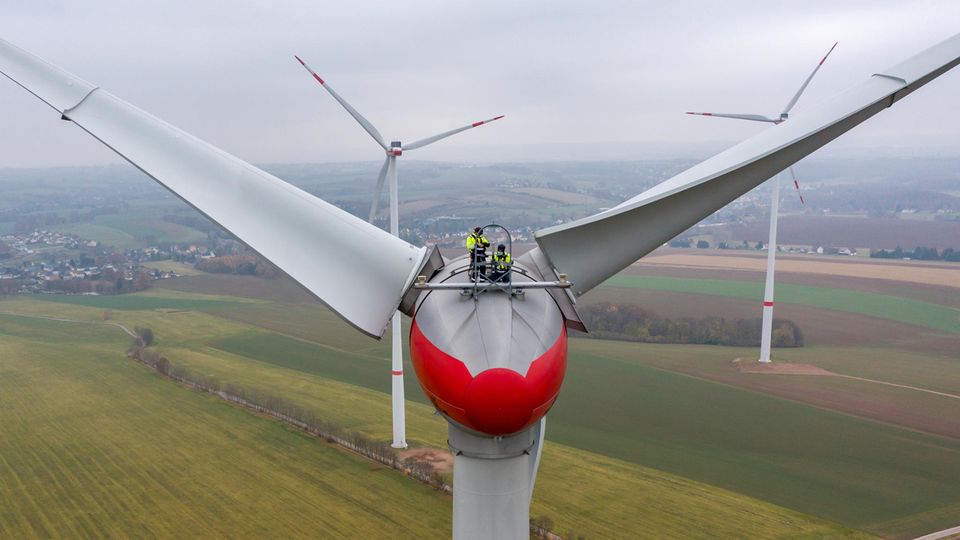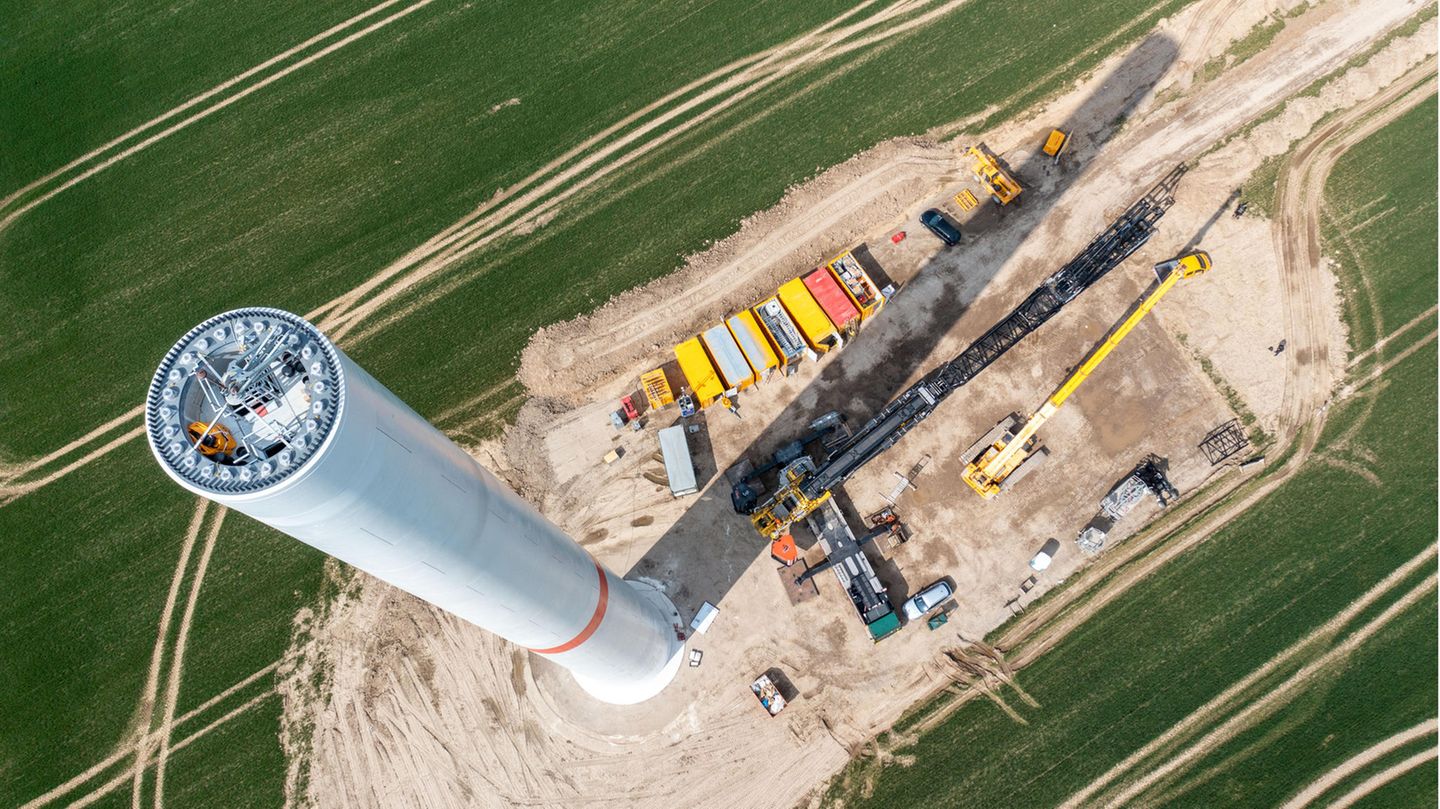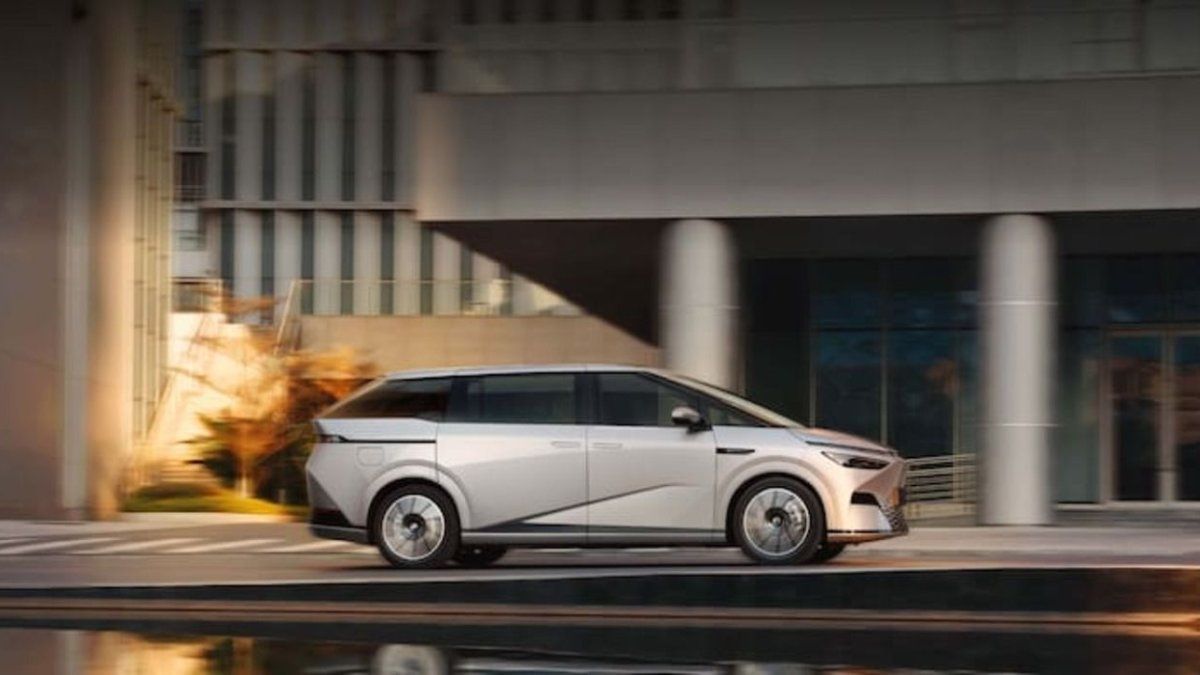More wind turbines are being built in Germany than in the previous year. But the pace of expansion of wind power is still much too slow – also because of local authorities. Some traffic light destinations are no longer accessible.
By Thomas Steinmann and Laura Esslinger
Since it took office at the end of 2021, the federal government has decided on many simplifications for wind energy in order to achieve the tightened expansion targets – but so far too little has been done in practice, including on the part of the authorities. The duration of the approval process for onshore wind farms has recently increased, said Bärbel Heidebroek, President of the German Wind Energy Association (BWE) when presenting the balance sheet for the first half of 2023 on Tuesday. According to Heidebroek, the process lasted an average of 24.5 months last year – a new record after a short decline in 2021. “We are slowing down in implementation,” said the BWE President. From the first expert opinion for a wind farm to the commissioning of the systems, you still have to reckon with six years – if everything goes well.
“The bureaucratic hurdles have increased in some places,” said Dennis Rendschmidt, Managing Director of the VDMA Power Systems association, in which, among other things, the manufacturers of wind turbines are brought together. The duration of the procedure is “not compatible” with the politically defined expansion targets for wind power. Instead of the four to five newly erected wind turbines per day formulated by Chancellor Olaf Scholz (SPD) as a benchmark, there are currently only 1.8 turbines.
The “discrepancy” between the current pace of expansion and the political target path of the federal government, which the wind industry is pointing out, is also reflected in the current statistics. According to figures from Deutsche WindGuard for the two associations, 331 new wind turbines with a total output of 1565 megawatts were connected to the grid in the first half of the year. This means that by mid-2023, 65 percent of the capacity installed in 2022 had already been achieved. For the year as a whole, the industry expects expansion at the upper end of the range of 2.7 to 3.2 gigawatts forecast by the BWE. The expansion is mainly being carried out by the states of Schleswig-Holstein, Lower Saxony and North Rhine-Westphalia. A clear upward trend can be seen in NRW after the black-green state government took office in mid-2022. The southern states, on the other hand, are still lagging behind; in Saxony, the total output even fell due to the dismantling of old systems.
Wind power expansion lags behind traffic light specifications
According to the associations, the overall increase in the dynamics of wind expansion compared to the previous year is not enough to be able to achieve the federal government’s goals for 2030. It is already clear today that the statutory target of 69 gigawatts of onshore wind power for 2024 can no longer be achieved. “The goal is missed,” said Rendschmidt. According to traffic light plans, onshore wind turbines with a total output of 115 gigawatts are to produce electricity by 2030 in order to ensure that 80 percent of electricity is generated from renewable sources. However, this will require an annual increase of ten gigawatts from the middle of the decade.
New kilns
Germany is phasing out nuclear power – in complete contrast to other countries
In their coalition agreement, the traffic light parties decided to massively accelerate the expansion of wind and solar systems for climate protection – a goal that has gained in importance due to the Ukraine war and the cutting off of fossil fuels from Russia. Since then, Economics and Climate Protection Minister Robert Habeck (Greens) has presented several comprehensive legislative packages that have been praised by the industry. Among other things, these provide for a legal priority for renewable projects, since they are considered to be of “overriding public interest”. In the meantime, new rules also apply to possible conflicts with nature and species conservation, especially with regard to bird protection. The aim of the legislative packages: The approval procedures for new wind farms, which have often gotten out of hand, are to be streamlined and the possibilities of blocking wind projects with lawsuits reduced.
Authorities delay wind power expansion
Industry representatives complain that in many authorities at district level, which specifically decide on the approvals for new plants, not much has changed in everyday life. The political change of course in the federal government has “not yet reached the bottom,” said BWE President Heidbroek. As in the past, many approval authorities still initially asked themselves what speaks against a new wind project. “We need a different mindset in the authorities,” she said. In addition, the federal states still have too few new areas for projects.
VDMA Power Systems Managing Director Rendschmidt referred to a practical obstacle to faster implementation of wind projects that have already been approved. Approval procedures for the transport of the huge rotor blades in Germany would take an average of twelve weeks, he said. In the Netherlands it is only four to five days. The Federal Ministry of Transport must make things easier here.
Figures from the state-owned Reconstruction Loan Corporation (KfW), an important financier of renewable energy projects, also point to a lack of momentum in wind expansion. The development bank is observing a slump in the number of applications for funding for domestic investments. “We see that the commitments in the KfW program for renewable energies have declined since the beginning of the year compared to the previous year,” said a KfW spokesman when asked by Capital. Companies can apply for loans from KfW to finance renewable energy projects, including offshore wind farms in the North and Baltic Seas.
KfW complains about “various obstacles”
The state development bank cites “various obstacles” as the reason for the decline, which primarily have to do with existing delivery bottlenecks for the systems. Increased construction costs, a shortage of skilled workers, higher interest rates and high interest rate dynamics also play a role. “These make it more difficult to invest in the field of renewable energies and are also reflected in the demand for promotional loans from KfW.”

For the coming months, however, KfW sees a positive development in the market. “There is a positive dynamic in terms of permits, awards and commissioning of wind and PV systems.” The development bank assumes that inflation and the high interest rate pressure will slowly subside, which will allow the number of applications for funding to increase slightly again. In the first half of 2022, funding of EUR 4.5 billion was approved under the KfW Renewable Energy Program. In 2021 it was 1.8 billion euros.
Source: Stern
I have been working in the news industry for over 6 years, first as a reporter and now as an editor. I have covered politics extensively, and my work has appeared in major newspapers and online news outlets around the world. In addition to my writing, I also contribute regularly to 24 Hours World.




